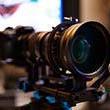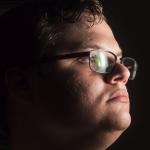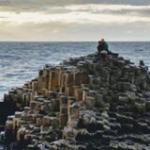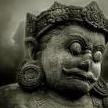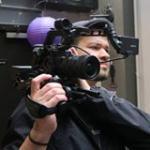Search the Community
Showing results for tags 'video'.
-
hey i have a sony alpha a58 and the settings are all different to what i expect and i was wondering if someone could tell me the bestb settings for the sony alpha a58 and im mainly filming skatboarding. I tried one setting and that quality was really un detailed and i really need someone to tell me the best setting for it. From memory the settings were 'avchd' and 'mp4' but when i shot in mp4 the quality was crap and i had it in 1080p. please can someone tell me whatb the best setting is!
-
Hey guys. i have a sony alpha a58 and this is my first dslr and i do alot of filming of skateboarding and the seetings for the video like 'avchd' and mp4 is what i dont get. I was wondering what the best settings are for really sharp videos and good colour reproducuction. The settings for format is like 50i and something else and like 25p and sopmething else. I need to know the best settings for besty video quality because when i put it on my pc the quality ios very un detailed and it looks horrible. PLEASE HELP!!!
-
Hi, I have kind of problem with my video, I think. It's hard to describe it, so watch this: http://www.youtube.com/watch?v=mhLb2VCYUak and this: http://www.youtube.com/watch?v=XCwKMco1VMo I think the video quality is terrible. I used auto focus but then I tune the focus by my hand because I know the auto focus is not very good. So I think the problem must be somewhere else. I have only kit lenses, that means the 18-55mm and 50mm f1.8. The first video was shot with the 18-55mm and the second with 50mm. I really don't know what to do with this. Can anyone help me please? Thank you in advance and sorry for my English.
-
Music video for the teen group EMKE. Shot over the weekend, my first time using a RAW workflow. I was totally unprepared for the amount of post work, but in the end the quality of the picture, both resolution and color, is outstanding! Thanks again to the Magic Lantern Team for making it all possible! https://vimeo.com/66681135
-
Hello all, Firstly thank you for taking the time to open this and at least read this far. For those of you that aren't here to give constructive advice and help please look else where to spread your negativity. If you've carried on read then thank you. I was an animator, film maker, director and editor a few year ago, but since the economic downfall I've now found a new career path in working with young people. I use my skills and knowledge base to engage the otherwise forgotten about youth of Birmingham, UK. I've researched over the last five years the possibility of creating a wedding videography business. I'm not thinking of it as a full time career, not as yet any how. But I really miss the create elements involved in producing creative pieces of film and I'm fed up of seeing the terrible quality of the videographers in my local area charging a small fortune. Since I've been out for a while I've done quite a bit of research on equipment and I'm finding so many conflicting reviews. It's proving difficult to narrow down and actually buy some equipment. Here's what I'm thinking so far: Canon 5d mark 2 with lens 1 £1,500 Memory 2 £440 Lexar Professional 128GB 800X 120MB/s High Speed UDMA CompactFlash Memory Card Steady Cam 1 £500 Steadicam Merlin 2 Mic 1 £150 Rode VideoMic Pro Camera Monopod 1 £130 Manfrotto Fluid Video Monopod Total £2,720 I'm interested into what you guys think and if I've missed anything out equipment wise. I'm looking for a DSLR that is suited towards video shooting full HD at least 50fps. I've read that the panasonic GH3 hacked are the best for video but over the past few years the Mark 2 still seems to be a strong favourite. Thank's in advance for your time and help Regards
-
I am interested in doing more video, but feel very restricted by my cheap sanyo camcorder. I have a Sony a200 for still photography, and have managed to accumulate 1 sony and 3 minolta lenses. I don't have a wide angle lense, or a telephoto bigger than 300mm (35mm equivalent), but being able to use those lenses and having manual control of the camera would open the door to a great many more possibilities. So: how good are current sony dslr's for video? I was eying the a57, which seemed to be able to do both still photos and video quite nicely. But on the other hand, with the new blackmagic camera coming out, maybe it would make sense to save up longer and get that. Micro four thirds seems to be the lense mount of the future, and it would be nice to feel my lenses will be useful on future equipment. There is an adapter to convert the A mount to the E mount, but I have failed to find any which would adapt it to MFT..... dropping $1k for the camera alone would be a real stretch financially, I don't know how viable that option would be if I had to purchase new lenses for it as well.... Anyway, anyone have experience with the sony dslrs for video?
-
A simple idea: dance a Mazurca in some places of our trip to Morocco. Recorded with a Sony RX100 Music by AmoRRomA http://vimeo.com/63613255
-
I got a Note 2, and I was just checking its Video Features, and, I love some of the presets. As a matter of fact, I found that the presets are very, very interesting. I like the resolution of the video video camera, too. I only wish, it had a faster lens (it has an f2.6 lens). Somehow, the idea of using a mobile device, to make films, or videos, seems more interesting, than using a camera, lens, mics, stands (tripods, tracks etc), external monitor etc. I wish, that Rode would make a Mic compatible with Android Devices, too. Also, I wish Magic Lantern would create apps, much on the lines of their famous hacks. I checked a few videos from the Note 2, and the quality, in bright light, is pretty amazing. This video is a good example of video quality: http://www.youtube.com/watch?feature=player_embedded&v=xRbY-MoKsA8#! Also, I was wondering, whether anyone has used external lenses, on their iPhone or Android devices? I found many add-ons, but, I also found this very interesting DIY project: http://smartphones.wonderhowto.com/how-to/5-simple-ways-add-macro-lens-your-smartphone-0139123/
- 3 replies
-
- Mobile Phones
- Android
-
(and 1 more)
Tagged with:
-
I just bought a Sony DSC-RX100. After a couple years shooting my personal projects on a Canon 7D, I needed something more compact that I could carry with me at all times, and the Sony DSC-RX100 looked like it could be the one. The great reviews, the ability to shoot 1080p at 50fps with a fast Zeiss IS lens, full manual control in video mode, focus peaking and a 16mm sized sensor convinced me to go for it! My footage shot on the 7D improved quite a lot during the time I've been using it, knowing a camera's strong points and especially its limitations is very important to getting good images out of it, so the first thing I did with the Sony DSC-RX100 was to shoot some tests to help me decide which settings I'll be using when shooting video with it. Like most people around here I learn so much from online reviews and discussion forums, and those have been a great help deciding my gear purchases, so I'm sharing what I learned from my tests as a way to return the favor and give something back to the community. There's been some good reviews of the Sony DSC-RX100 online, and some useful info spread around the internet, but I think this post will cover a lot of useful information for whoever's interested in this camera for video, and much of this info will also apply for any other similar camera. I started by turning off all the automatic picture improvement options, as they usually degrade the quality of the image and make it less gradable, then I set the codec to AVCHD at 28mbits and 50p (PS). SHOOTING MODE For video shooting I'd recommend setting the top wheel to video mode and then selecting video-M for manual video shooting The RX100 does have a dedicated Movie Recording button, and can shoot video on any Stills mode, but you might get aspect ratio and exposure changes once you hit the Record button in these modes. In video-M mode you'll get what you see on screen. RECORD SETTINGS The Sony RX100 can shoot movies in two different formats, MP4 and AVCHD. All MP4 options are below 1080p resolution though, so I won't get into those. In AVCHD mode however, we get 3 different 1080 options: 50i 24M (FX) (50i @ 24Mbps, Blu-Ray AVCHD disc compliant) 50i 17M (FH) (50i @ 17Mbps, DVD AVCHD disc compliant) 50p 28M (PS) (50p @ 28Mbps, Progressive Scan) So it seems like we get 50i at 17Mbps and 24Mbps, and we get 50p at 28Mbps, but not really… The 50i mode is actually capturing 25p images out of the sensor and encoding them as 50i footage, this means that we do end up with interlaced footage, but since it was captured progressively, de-interlacing it will produce a clean 25p image! So if we're looking for the best possible video out of the RX100, we should use 50i 24M for 25fps video and 50p 28M for 50fps video. In theory, shooting 50i 24M gives us the best bitrate per frame in this camera, almost twice as much as shooting 50p 28M. Shooting 50fps however would have neighboring frames changing less than when shooting 25fps, helping the encoder do a better job, but still the per frame bitrate is lower, and here's a comparison that shows is. If you look at the darker areas in the back where the window is, you'll see that the 50i version is slightly cleaner. Here's an example of something in motion shot at 50i and 50p, the 50i frame was de-interlaced and as you can see there's no interlacing artifacts at all. Considering all of the above, I think it's safe to say that the 50i 24M mode, which is in fact 25p @ 24Mbps, will give you best video quality out of this camera. CREATIVE STYLES Creative Styles is the RX100's designation for Color Profiles. My first test was to choose the flattest Creative Style the camera had to offer, so I shot some footage of all the different styles. After looking at all these different images, I decided to go with the Portrait Creative Style, as it seems to be the flattest of them all. EXPLORING THE PORTRAIT CREATIVE STYLE Each Creative Style has settings for Contrast, Saturation and Sharpness that can be set from -3 to 3, so I shot some more footage using the Portrait Creative Style in a number of different settings. Using the Portrait Creative Style at the minimum settings (Contrast: -3, Saturation: -3, Sharpness: -3) definitely (and obviously) seems to be the flattest style in this camera, but I had to check how well it graded and how it compares to using the default values (Contrast: 0, Saturation: 0, Sharpness: 0). On the top left you have a frame shot using the Portrait Creative Style, with all the settings set to 0, on top right you have a frame shot using the Portrait Creative Style in its flattest settings (Contrast: -3, Saturation: -3, Sharpness: -3). On the bottom right frame I added some sharpness to the flat image, which responded quite well, and on the bottom left frame I added not only sharpness but also increased the Saturation and Contrast in order to match the top left frame (Contrast: 0, Saturation: 0, Sharpness: 0). The result is an image that matches in color saturation and contrast, but with a much nicer detail and less compression artifacts. It looks sharper and cleaner overall, which made me decide to use this Creative Style and these settings from now on. SHOOTING BLACK & WHITE The following test is something I've been wanting to do for a while, regardless of the camera. The thinking behind this test was: "If the camera is compressing B&W footage instead of color footage, maybe it can do a much better job at it since it doesn't have all the color information to process, so even using the same bit rate could give us better results." Of course I don't know the details on the cameras' inner workings, but assuming the B&W Creative Style is applied BEFORE the footage is compressed to AVCHD, then this should work. Maybe. So I shot some footage using the B&W Creative Style in its flattest settings (Contrast: -3, Saturation: -3, Sharpness: -3), which you can see on top left, and then some more footage using my new favorite Portrait Creative Style, also in its flattest settings (Contrast: -3, Saturation: -3, Sharpness: -3). On the middle left frame, I increased the sharpness and the contrast on the image to make it less flat, and on the middle right frame I did the same, and also desaturated it. As you can see both images are different, since the B&W Creative Style's color conversion is not merely desaturating the image to create a B&W version, it's using a more clever process that also looks better, but anyway, the point here is to test the image compression and figure out which one gives cleaner results, so on the last test frames I increased the exposure by 2 stops to find out how well the images handled it. On the bottom left frame you can see how much cleaner the image shot with the B&W Creative Style is, compared with the one shot using the Portrait Creative Style, it's actually beautifully clean and overexposing it by 2 stops didn't show any ugly artifacts at all. So my conclusion on this one is, if you're shooting for black and white, and you're sure that's the look you'll want (since it's kind of hard to color B&W footage if you change your mind afterwards), then using the B&W Creative Style will give you far superior results! DYNAMIC RANGE OPTIMIZER The Dynamic Range Optimizer works when writing to compressed formats, such as JPG, MP4 or AVCHD. It has no effect when shooting RAW. Its purpose is to capture more detail in the areas that are more prone to get lost when using compressed formats, such as dark shadows. It works in the darker areas of the image, making them brighter and producing a flatter image, which makes it easier on the image compression to achieve better results. Here's a test scene shot using all the DRO levels available. There's also an Auto Mode, but I suspect it wouldn't give predictable results when shooting manual video. The result is quite clear on every mode. Personally I think 5 is too much and might be actually degrading the image more than it helps, but lower settings definitely look not just useable but very useful in achieving a flat and clean image. I'd say using the DRO in its modes 2 and 3 would definitely help achieving a better flat image. I'll probably leave it at 2 all the time and increase it to 3 in situations with more contrast. 5DtoRGB I've used 5DtoRGB on Canon footage since the early beta versions, and I honestly don't understand how come it's not used by everyone. 5DtoRGB features one of the best YCbCr to RGB compression out there, and it's free!!! (the Pro version with batch capabilities costs $50 though) 5DtoRGB does a great job improving aliasing and compression artifacts and transcoding to 10-bit Prores (can also transcode do DPX image sequences and DNxHD files), or at least it did with Canon DSLR footage, so I thought I'd try it with the RX100. The top frame is from the original AVCHD file and the bottom frame is from the Prores transcoded file out of 5DtoRGB. 5DtoRGB automatically changed the Decoding Matrix setting to ITU-R BT.709, so I assume that's the one to use with the RX100 (Canon DSLRs like the 550D, 60D or 7D used the ITU-R BT.601 Decoding Matrix, the 5Dmk3 however used the ITU-R BT.709). Looking at it like this there's not much of a difference, so I went looking in the channels. The Red and Green channels looked quite clean in both versions, but looking closely at the Blue channel you can see how 5DtoRGB makes a pretty good job at smoothing out some of the compression blockiness, but mainly smoothing out the aliased lines you get on sharper edges. Using 5DtoRGB won't do any miracles, but when shooting to 8 bit compressed codecs, every little bit helps, and using it along with a flat Creative Style will definitely help you getting cleaner and better images. SHUTTER ANGLE / SHUTTER SPEED The Sony DSC-RX100 has the annoying feature of only shooting 50fps (or 60fps on NTSC markets). On one hand it's great to be able to shoot 50fps at 1080p, but on the other hand, shooting 25fps at the same bit rate would probably produce better results with less compression. One of the advantages of this could be that you'd always have the extra frames in case you needed the slow motion effect, but unfortunately that's not quite the case, since the ideal shutter speed for 25fps real time playback is different than the ideal shutter speed for 25fps slow motion playback. If you're planning on shooting for 25fps real time playback, then you should set your shutter to 1/50, but if you intend to shoot for slow motion playback at 25fps, then you should set your shutter speed to 1/100. Using a shutter speed of 1/100 for real time 25fps playback will not give you enough motion blur, and the motion playback will not be as smooth as it should. Also, playing back footage shot at 1/50 shutter speed at 25fps slow motion will have too much motion blur, making its motion look rather fuzzy. Here's a sample file you can download yourself. This was shot at AVCHD, 1080 50fps with a shutter speed of 1/50, meant to be used on a 25fps timeline, playing at real time: https://dl.dropbox.com/u/8569573/rx100review/RX100videoSample1.mov That's it for now, I really hope it helps some people out. I have some videos I can share later on if you're interested, and I also might update this review with tests of the different Steady Shot modes once I get to them. Keep in kind that these are only my findings and personal opinions, it would be great to hear from people with different opinions, or about settings you think would give better results. Enjoy!
- 153 replies
-
- rx100
- creative style
- (and 6 more)
-
Hey, this ended up on ESPN Sportscenter Top 10 on Thursday night, as the #1 video, and was played on a bunch of ESPN shows on Friday. I shot it Wed. night. I shoot video for fun of the Jacksonville College games and this is Daniel Skinner putting down a crazy dunk from almost the free throw line. They were playing Tyler Junior College in Tyler, TX. I know it's not great footage, but guess I at least managed to get the shot. I was shooting with my GH2 and the 14-140 lens. I think I had the ISO at 1250. Not sure I was messing around with it at different times. Pretty cool to get it on there and the guys on the team are getting a real kick out of it. Kind of getting crazy as it seems to be going viral. Lum [url="http://youtu.be/bhoah2OGltM"]http://youtu.be/bhoah2OGltM[/url]
-
[color=#000000][font=Tahoma, Helvetica, sans-serif][size=3][background=rgb(238, 238, 238)] I have succumbed and have an RX100 coming this week to be my B camera to my Sony Nex 5N![/background][/size][/font][/color][color=#000000][font=Tahoma, Helvetica, sans-serif][size=3][background=rgb(238, 238, 238)] I ideally want to shoot footage on the RX100 to look identical to that of the 5N so if I was to use both at a function I could easily mix in footage from both cameras to create a final piece.[/background][/size][/font][/color][color=#000000][font=Tahoma, Helvetica, sans-serif][size=3][background=rgb(238, 238, 238)] The constant question marks over shutter speeds at 50p on both cameras is also bothering me. I shot some footage at 50p 1/50 to see if the footage would be useable both in slow motion in a 25p timeline and also at normal speed in a 25p timeline. In both cases I was not too happy with the motion blur, It just does not look as good as shooting either natively at 25p at 1/50 or 50p 1/100 for slow mo in a 25p timeline.[/background][/size][/font][/color][color=#000000][font=Tahoma, Helvetica, sans-serif][size=3][background=rgb(238, 238, 238)] Based on the above I think you have to make a decision before you shoot any footage at 50p that is to be used in a 25p timeline. That decision is to whether your footage is going to be slowed down in post or not. Based on this answer you can then decide to shoot 50p at 1/100 for slow mo or 1/50 for nornal speed..although like I said I still think 1/50 shutter at 50p at normal speed in a 25p timeline still does not like as good as shooting natively at 25p on the camera (which you cannot obviously do on the RX100, but you can on the 5N)[/background][/size][/font][/color][color=#000000][font=Tahoma, Helvetica, sans-serif][size=3][background=rgb(238, 238, 238)] I will always be putting any footage I shoot in a 25p line so that is the only constant I am sticking with…its how I merge the footage from both cameras and get the best settings on both to deliver the best output….that is my main concern and caveat at this stage.[/background][/size][/font][/color][color=#000000][font=Tahoma, Helvetica, sans-serif][size=3][background=rgb(238, 238, 238)] With all this in mind I think I might choose to use my NEX 5N for 25p 1/50 footage and my RX100 for 50p 1/100 slow mo footage exclusively.[/background][/size][/font][/color][color=#000000][font=Tahoma, Helvetica, sans-serif][size=3][background=rgb(238, 238, 238)] If anyone can give any sage help and advice on this I would greatly appreciate it.[/background][/size][/font][/color]
-
Hi all, i just came back from a trip in Japan and made this short clip about Tokyo, it was my first use of timelapse in a video and i tried to make the most of it when possible. [url="https://vimeo.com/51719933"]http://vimeo.com/51719933[/url] Hope you like it and thanks for watching !
-
Hi, I'm new to DSLR and HD DSLR photo shooting. Up until now I've being taking HD video with a Sanyo (now Panasonic) HD-2000 - a Full HD camcorder which allegedly can do stills (not good ones..). At the time I had a hard time choosing between the Sharp and the Canon 550D but the fact that I was interested primarily in Video I chose the Sanyo. Over time I accessorized it and even built a DOF adapter for NIKON lens. Now it's time to move on and I feel it's time to revisit the DSLR scene.. (you know DOF, movie style).. I've read a lot of reviews and I pretty much narrowed it down to the GH2 when I stumbled across the reviews for the Sony Alpha A57 or A37. I hope I will not raise hell with the following questions, I would like to kno why not choose Sony Alpha A57 over the GH2? Assuming that I will be 70%-60% videographer and 30%-40% photographer. It seems that for the same amount of money you get with Sony better built camera, larger sensor, good continues autofocus, larger selection of original lenses, much better back screen and higher resolution for stills. I've big hands and I spoke today with a former GH2 owner who complaint that the GH2 was on the "too small" side for him. Thoughts? Ideas?
-
Hi dudes, I've been a long time reader here and this is my first proper comment. Recently me and my colleague set up a production company for narrative projects and our first project was a music video. We tried to offer a band we know (signed to an independent label) something different, with a plotline of a cagefighter to cut back to back to them playing in an abandoned industrial location we've rented for the day. We asked for a decent budget of £800, which in the end left about £100 for me and £100 for my producer/ 1st AD. It was just us two on the crew. They think we've ripped them off. They're not being grumpy, just generally dissatisfied with the end result. So I was wondering if I could get some feedback from the GH2 community and see if you guys think we've charged too much for this: https://vimeo.com/48942536 Video details/ camera settings in the vimeo description Lucas
- 3 replies
-
- Panasonic GH2
- Voigtlander
-
(and 5 more)
Tagged with:
-
So we all know that the GH2 is still king for video, specially when you want to get the best bang for the buck, but... ...What would you say are the Top 10 Best Cameras for Video? RX100? G5? EM-5? 60D? name your weapons of choice! ;)
-
Hi i just bought the panasonic gh2 and I'm about to buy a voigtlander nokton lens.. just wondering which would be better - voigtlander nokton 25mm or voigtlander nokton 17.5mm? i would be using it primarily for video.. i understand the 17.5mm has clickless aperture ring but it's easier to focus in 25mm? any advice welcome!
- 5 replies
-
- voigtlander
- nokton
- (and 5 more)

